“From said Main Street at the point of N. M. Webb’s going northerly to Rowell’s Hill; Pleasant Street”
*
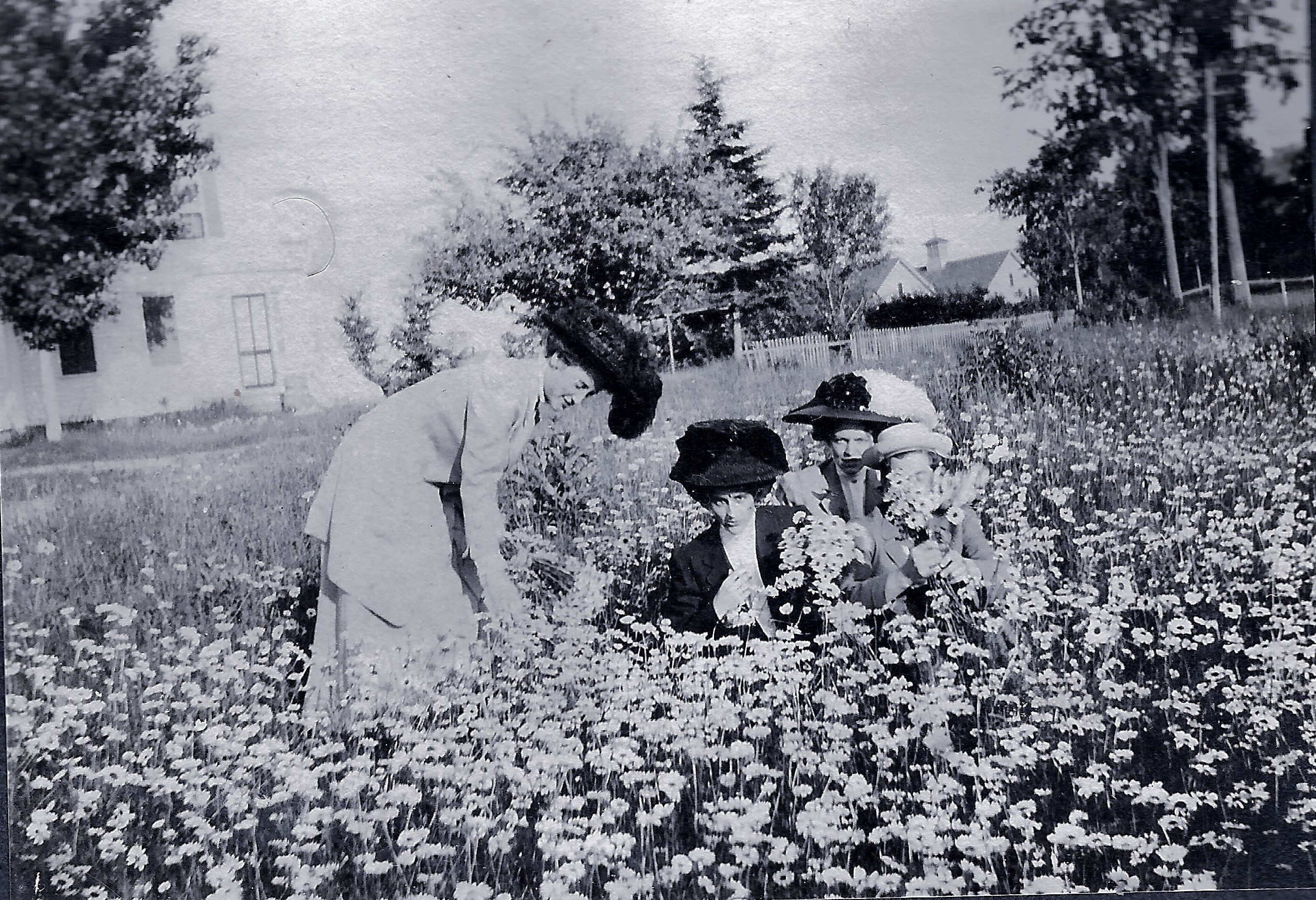
Mary (Anderson) Butterfield & friends picking daisies behind Pleasant Street – c1905
*
Pleasant Street begins at the corner of Main Street and the Canaan Road (aka Outer Main Street) and extends to the former railroad crossing where it becomes the Athens Road. The entire length of the street and road to North Hartland has likely existed in one form or another since the early settlement of North Hartland providing those early settlers access to the Village.
*
Currently, no maps of Hartland detailing the locations of homes, businesses and merchants before 1860 have been discovered. Various documents provide us with enough information to know many existed in its early years of settlement, but most of the specific details of when they were built or by whom remain unknown. The following is based on our best interpretation of known maps, town records, census data, historical book references, photos, artifacts and family genealogical information. Updates will be made as new information is discovered.
*
As noted in the 1st Hartland Town Warrant in 1820, several School Districts for the Hartland Common Schools (Grade K-8) were established throughout the town’s major populations regions in North Hartland, West Hartland and the Village. The Ireland School on Pleasant Street was one of the earliest schoolhouses and likely existed by 1820. In the early 1900s, the Ireland School was closed and sold to make way for the new Pleasant Street School built next to it on the same lot.
*
Pleasant Street School (aka Athens Street School), and its predecessor Ireland School, housed lower grade students mostly from the Village area. Children were provided an education for over 130 years at the two respective Pleasant Street locations until 1950 when a new consolidated elementary school opened on Elm Street.
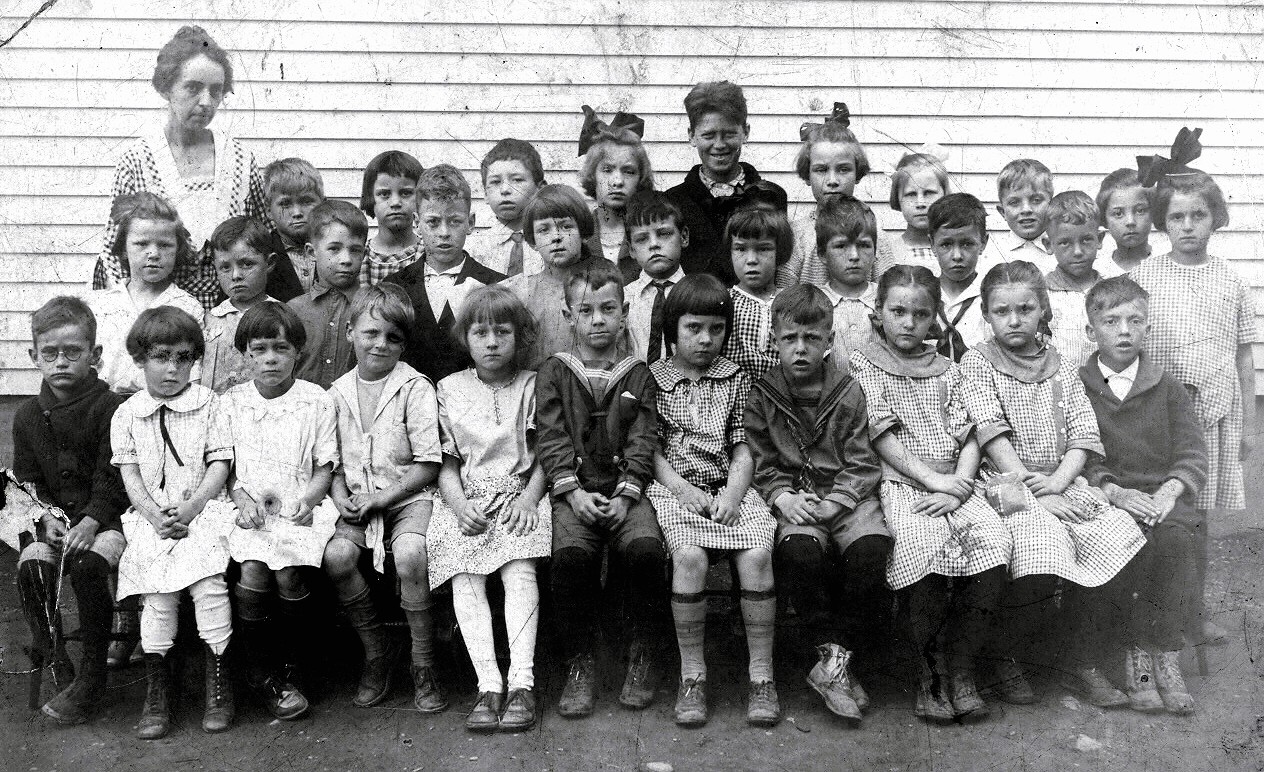
Pleasant Street School – 1923
*
With upwards of 50 young, anxious grade school students gathered for classes, Teachers needed additional measures to garner their attention.
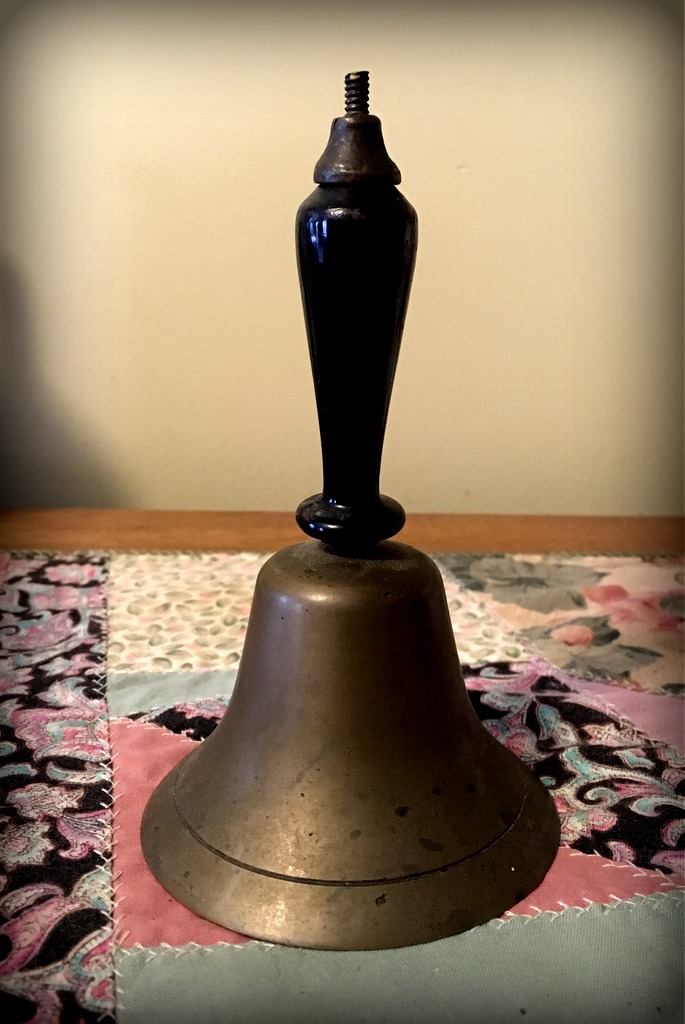
Pleasant Street School Bell (Photo courtesy of Hilda Emery Nutter Family)
*
Ireland Cemetery was known for decades as the Village Cemetery as noted on various death certificates, obituaries, town reports and newspaper articles with occasional mention to it as Pleasant Street Cemetery. Early town meeting records from the 1820s indicate James Moor, son of William & Sally Moor, might have donated some of the property where the cemetery is located on Pleasant Street however no exact location was noted. His offer did come with a stipulation that people from St Albans could also be buried at the cemetery. This likely alluded to some of his family members, including his maternal grandparents Abraham & Esther Moor, who were early settlers in what was then still part of St Albans until 1846.
*
It remains unclear exactly when or why its modern designation as Ireland Cemetery came to be although after Captain Joseph Ireland moved to Hartland by 1840, he owned a large 90 acre homestead across from the cemetery known as the Ireland Farm as seen on the 1860 Map of Hartland below when it was owned by his son Joseph Ireland, Jr. His son Farwell Ireland also owned property next to the cemetery. The Ireland Farm was purchased by Greenville J. Shaw by 1883 as seen on the 1883 Map of Hartland below and as noted in the property deed below, however Shaw’s home on Commercial Street remained his primary residence. Much of the former Ireland Farm property would be purchased by H. C. Baxter & Brother Canning Company to build and open a new canning factory in 1913.
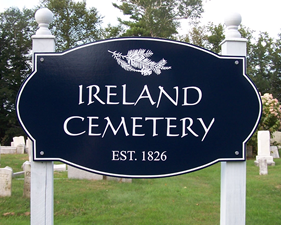
Ireland Cemetery (Oldest Interment is 1823)
*
Captain Joseph Ireland (1767-1851) is the son of John Ireland, Sr & Lydia Farwell. Joseph’s Uncle Abraham Ireland was an early settler in Canaan in the 1780s and was joined there by Joseph’s father John Ireland, Sr by 1790. Joseph’s brother John Ireland, Jr was the first permanent settler of North Newport in 1807. Joseph married Olive Moor in 1800, a sister of Sally Moor who married William Moor. They resided in Canaan before moving to St Albans by 1830 then to Hartland by 1840.
Joseph came to Corinna around 1809 at the request of Dr. John Warren to erect a grist & lumber mill in what is now Corinna Village then sold the businesses a couple of years later to his brother-in-law William Moor. William & Sally moved soon after 1820 to Corinna with their youngest children and remained until their deaths. Joseph & Olive are buried at his future namesake cemetery along with 2 of their sons, a daughter, his mother and Olive’s parents, Abraham Moor & Esther Walker.
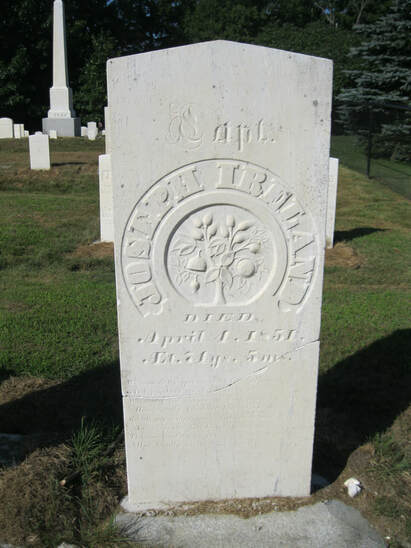
Captain Joseph Ireland (1767-1851)
*
James Moor’s grandfather Abraham Moor is the oldest known interment at Ireland Cemetery later joined eternally with his wife Esther Walker.
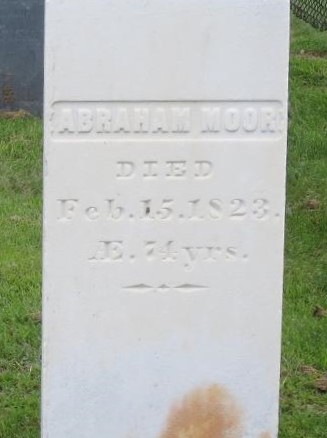
Ireland Cemetery First Known Interment – Abraham Moor (1749-1823)
*
Only a few houses are seen on the Village Map of Pleasant Street in 1860 but a couple more homes existed further out past the map border.
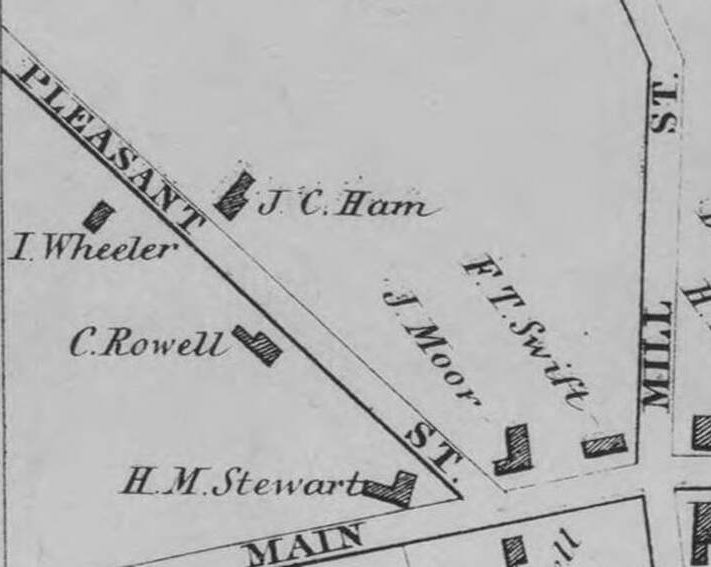
Hartland Village – 1860
*
Ireland Cemetery, Ireland Schoolhouse (SH) and several other homes are noted below on Outer Pleasant Street in 1860.
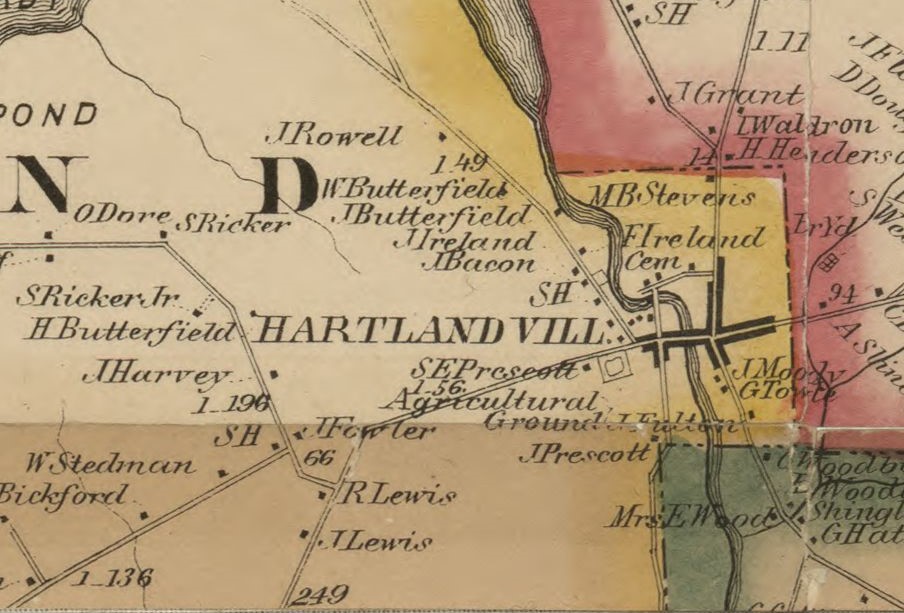
Hartland Map – 1860
*
By 1883, several more houses had been built on Pleasant Street especially along its northeasterly side with many of these houses existing today.
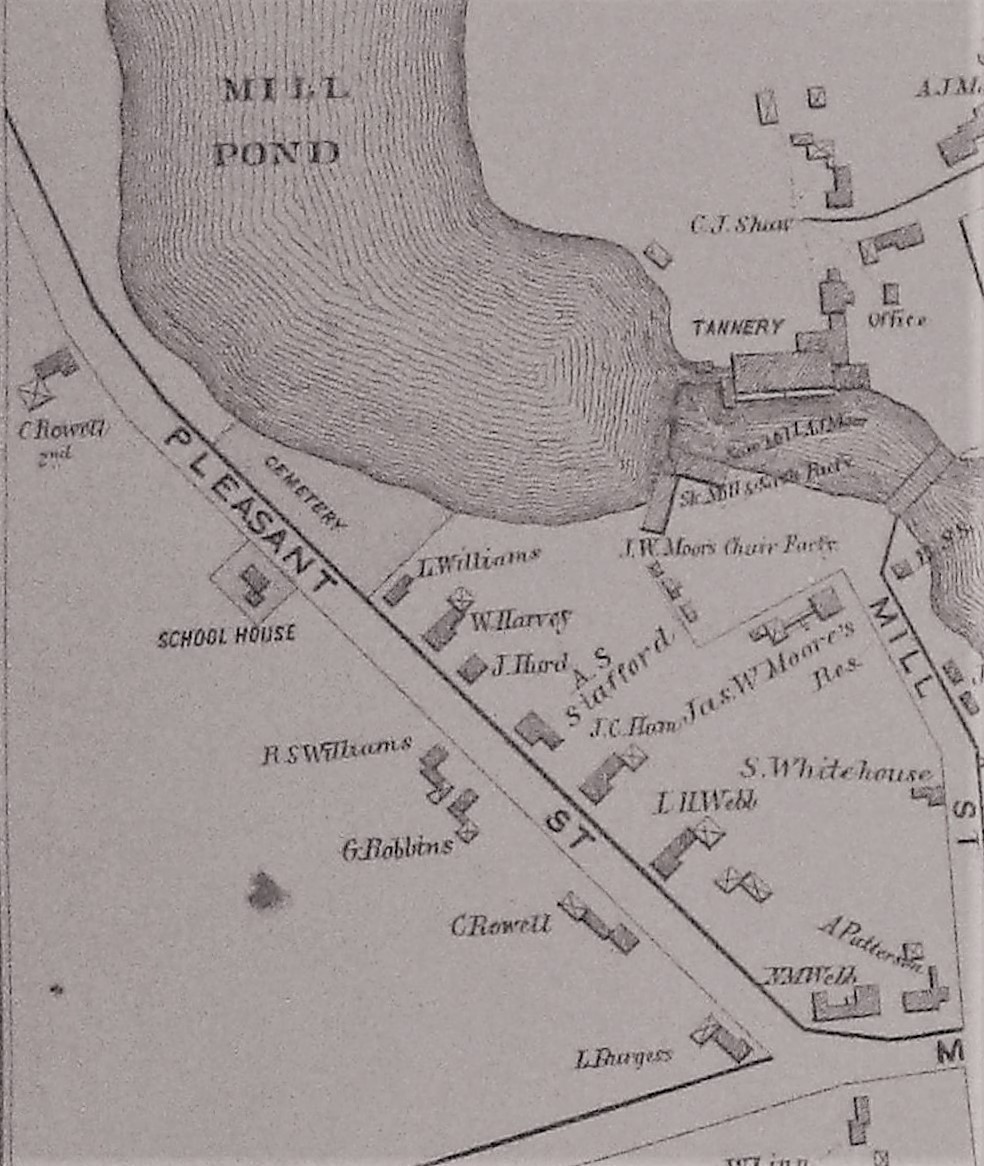
Hartland Village – 1883
*
A couple of the Pleasant Street houses and lots below not seen on the 1883 Village Map.
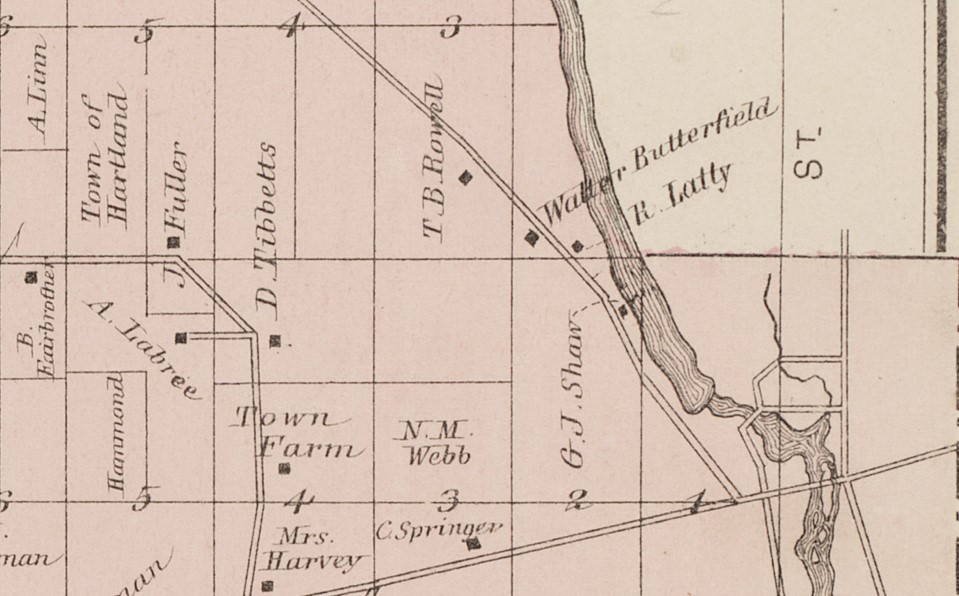
Hartland Map – 1883
*
Greenville J. Shaw Deed for the purchase of the former Ireland Farm Homestead by 1883:
“A certain lot situated in said Hartland and known as the “Ireland Farm” containing ninety acres, more or less, bounded and described as follows: On the west by land of Charles Springer and Mrs. Marshall; On the south by the road leading from Hartland Village to Canaan; On the east by land of William Stedman, Nathan M. Webb, Charles Rowell and the Sebasticook River; and on the north by land of Robert E. Latty and Walter Butterfield.”
*
On November 17, 1886, the Sebasticook & Moosehead Railroad line from Pittsfield to Hartland opened. Initial plans of the new railroad were to extend the line to Monson which would then connect to Moosehead Lake, however numerous financial issues delayed the extension project. Although they were able to stabilize their finances, the Railroad Commission would only approve the proposed extension as far as Main Stream.
Work on the line from the train yard on Outer Main Street finally began in 1891 with the new route traveling behind the entire length of Pleasant Street. By the end of 1895, 5 miles of the 7.4 mile road bed extension to Main Stream had been graded however it was far from completed. A big push of more work was done in 1898 & 1899 in an attempt to complete the project but it would not be ready to open until early 1901.
*
One final detail of the proposed rail route extension was to determine the type of road crossing needed for Pleasant Street. A meeting was held at the Park House in Hartland on October 2, 1895 and it was determined by the Railroad Commission, “The crossing was ordinary and not dangerous and could be crossed at grade.”
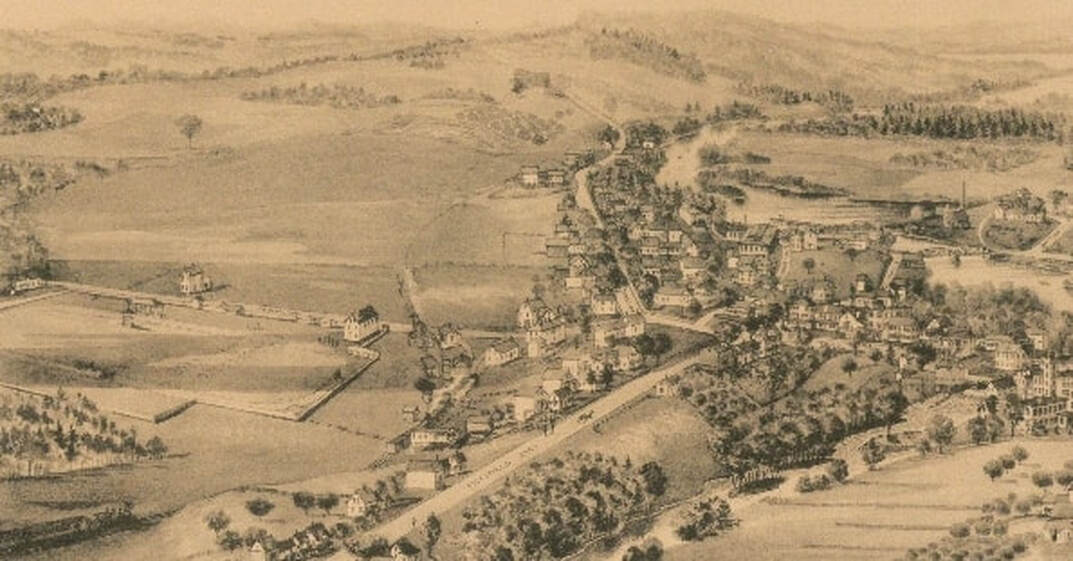
Hartland Village – 1896
*
At the 1897 Town Meeting, the citizens of Hartland voted to accept an updated list of street names in the Village including, “From said Main Street at the point of N. M. Webb’s (Nathan M. Webb) going northerly to Rowell’s Hill; Pleasant Street.”
*
On January 10, 1901 the extension of the Sebasticook & Moosehead Railroad line from the Hartland Depot to Main Stream in Harmony on Great Moose Lake was finally opened. The new line crossed Outer Main Street running behind the length of Pleasant Street then crossed Pleasant Street just past the old Furbush Homestead. The line was bought out by Maine Central Railroad in 1911 but the sight and sounds of trains passing back and forth on their daily runs would continue as a familiar backdrop to residents on Pleasant Street for the next 60+ years.
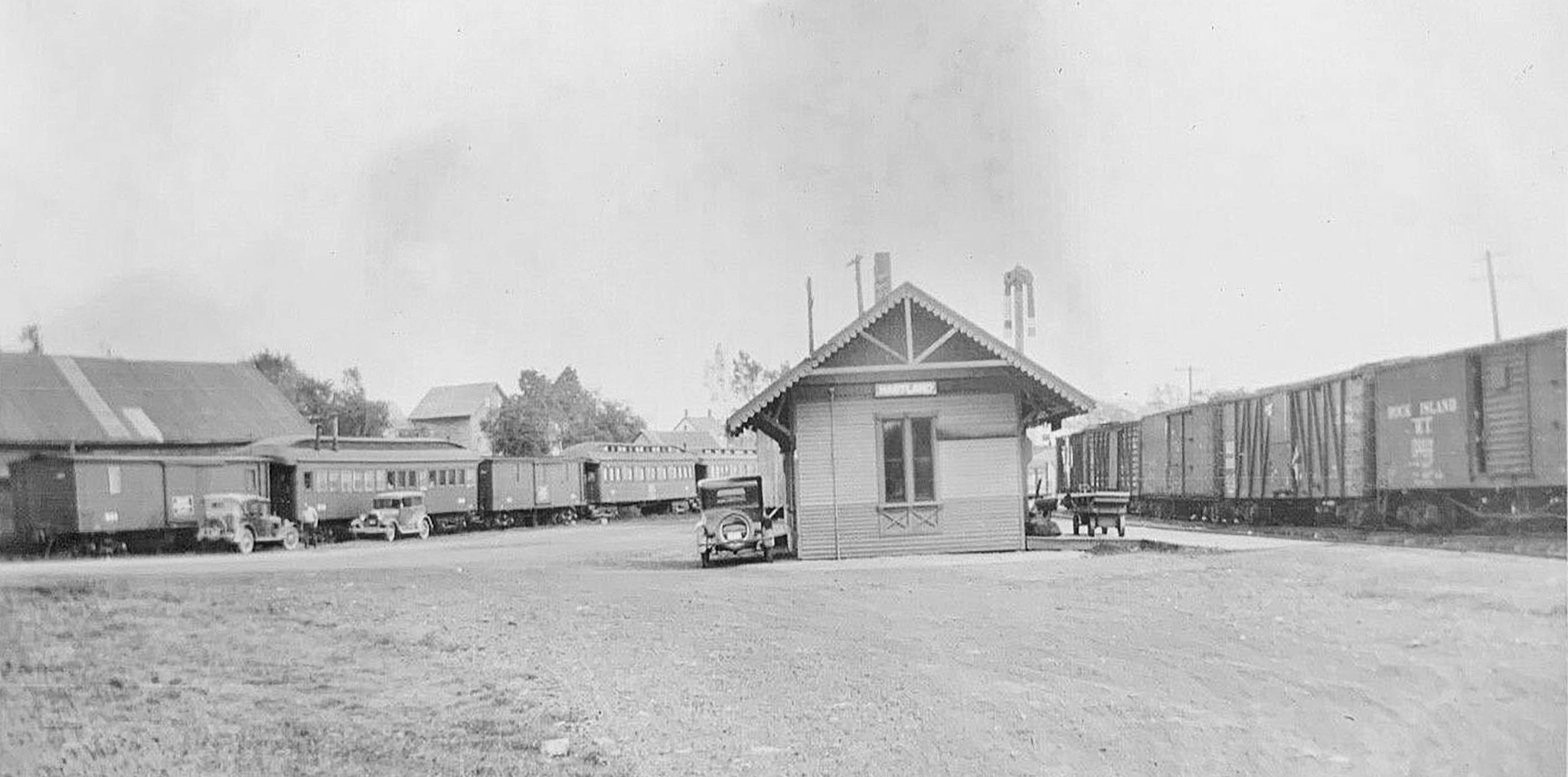
Hartland Train Yard – 1942
*
In 1913, H. C. Baxter & Brothers Canning Company began operations at their new plant on Pleasant Street located on the former Ireland Farm Homestead. They would become one of the largest area employers supporting not only many jobs at the plant but hundreds more at farms throughout the area. The existence of a local rail line connecting to the rest of the country was at least one of the major contributing factors for locating their new facility in Hartland.
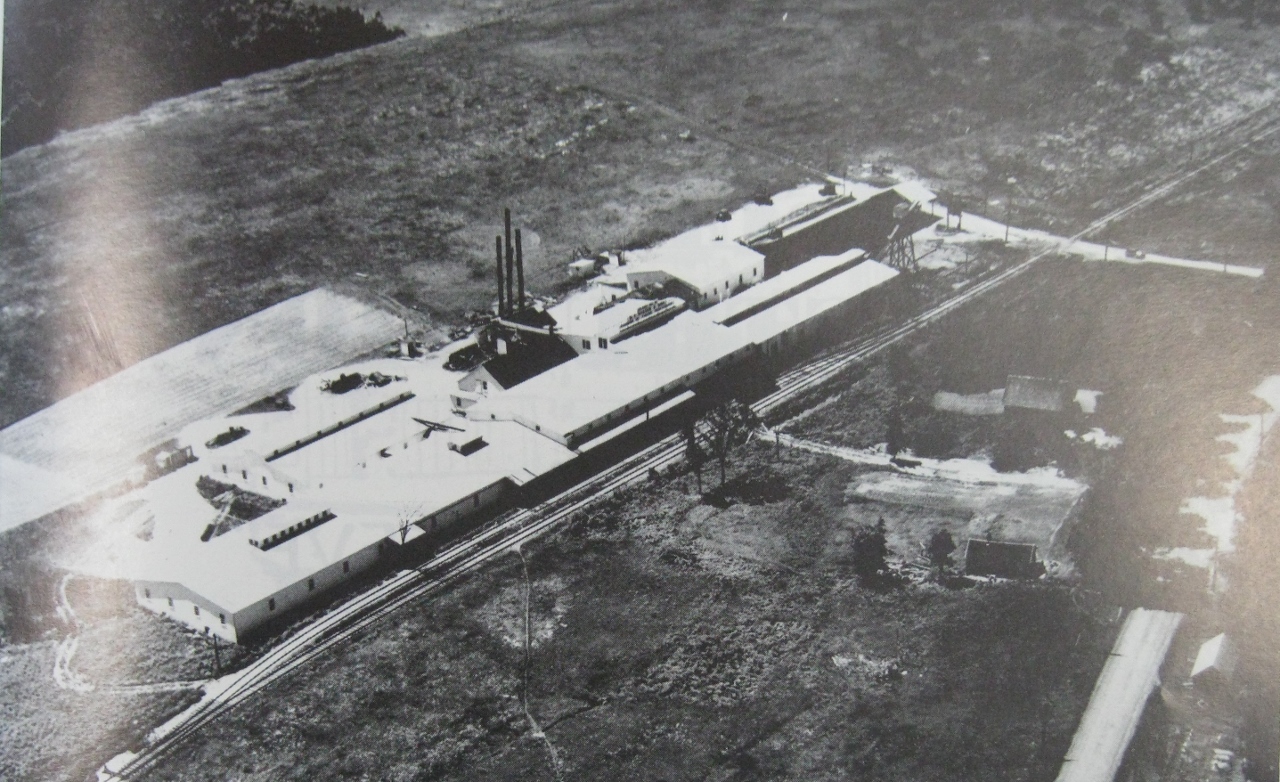
H. C. Baxter & Brothers Canning Company – 1930s
*
One of H. C. Baxter & Brothers Canning Company numerous products were Baxter’s Finest Fancy Maine Sugar Peas.
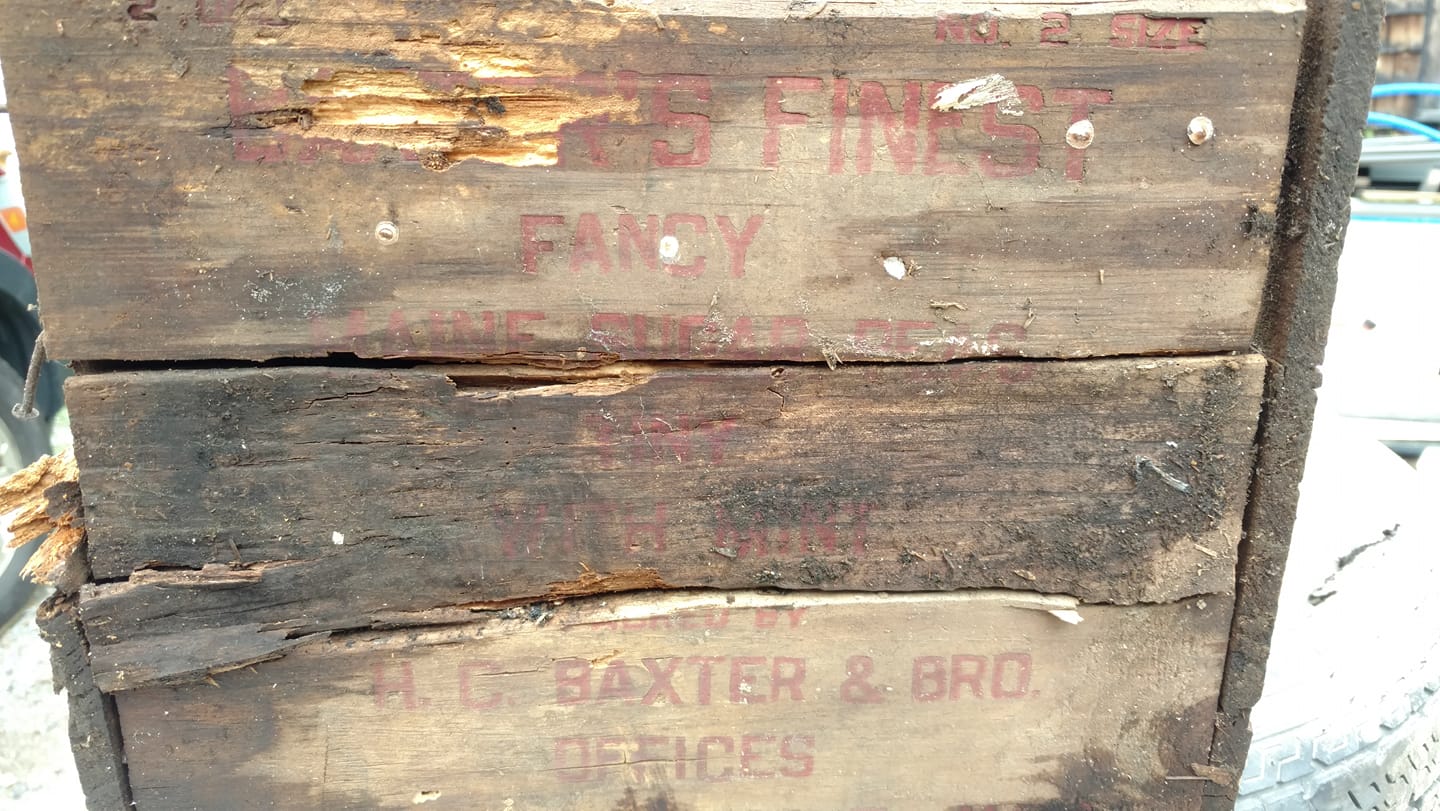
H. C. Baxter Packing Box from the former Furbush House on Outer Pleasant Street (Photo courtesy of John Hikel)
*
Numerous improvements were made at the Pleasant Street School over the years including a new larger wood stove and a new Outhouse.
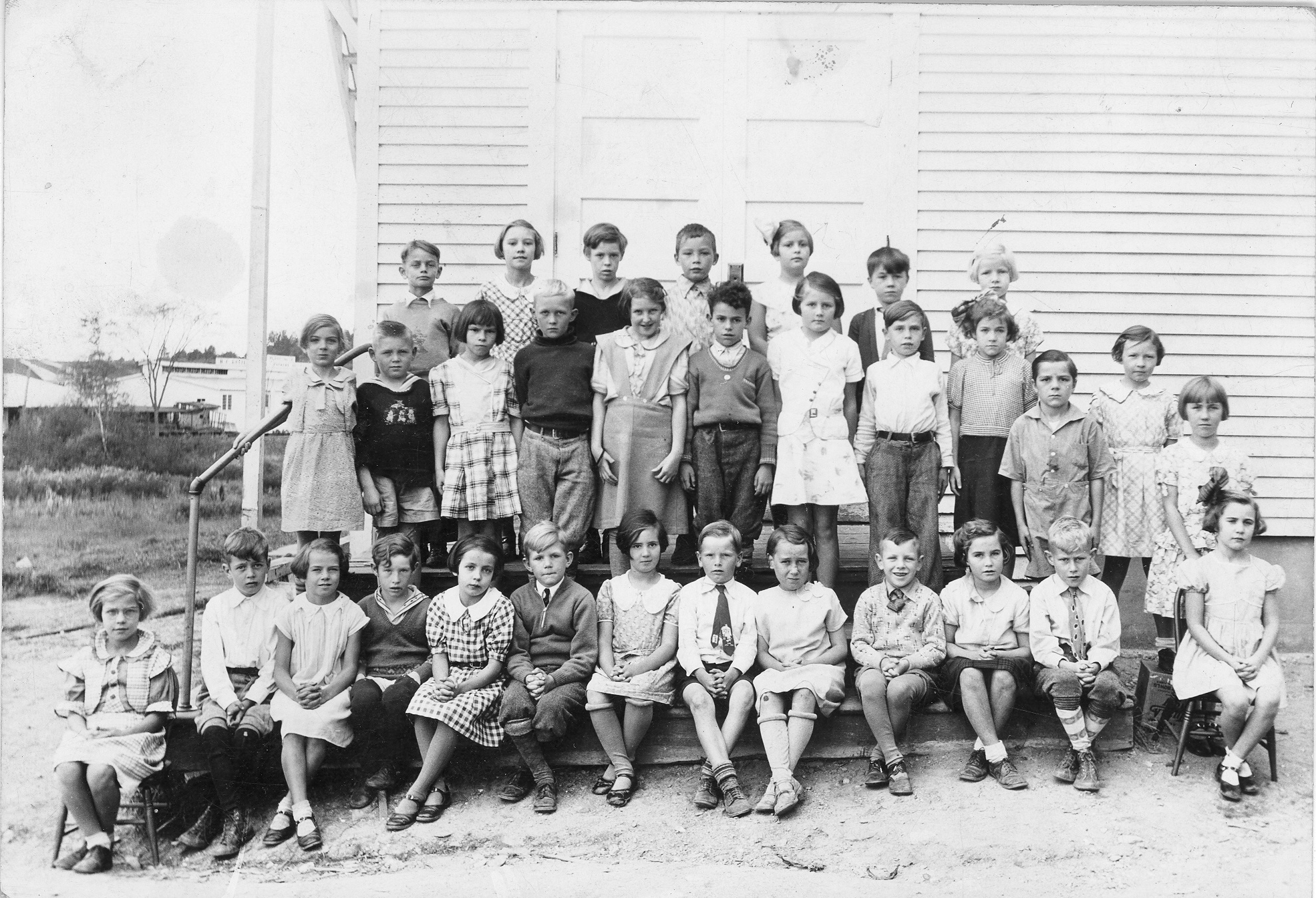
Pleasant Street School – 1935
*
“In the winter of 1942, H. C. Baxter Company was awarded a contract by the U. S. Army and the Hartland plant began producing dehydrated potatoes (a process which had never been done before) for the troops in World War II. It was the first company in the East to produce dehydrated potatoes for use in the war. Using Olaf Pierson’s newly invented continuous steam peeler along with a continuous belt dehydrator, the operation operated during the potato season of November to May, 24 hours a day, 7 days a week from 1942 until 1945 when the war ended. It was the lowest cost and most successful producer in the East and many more dehydration plants around the country were designed from it. Over 6 million pounds of diced dehydrated potatoes were produced at the Hartland plant and shipped to the Army & Navy by war’s end; enough to fill 10 miles of railroad cars.” (Fogler Library Archives – University of Maine at Orono)
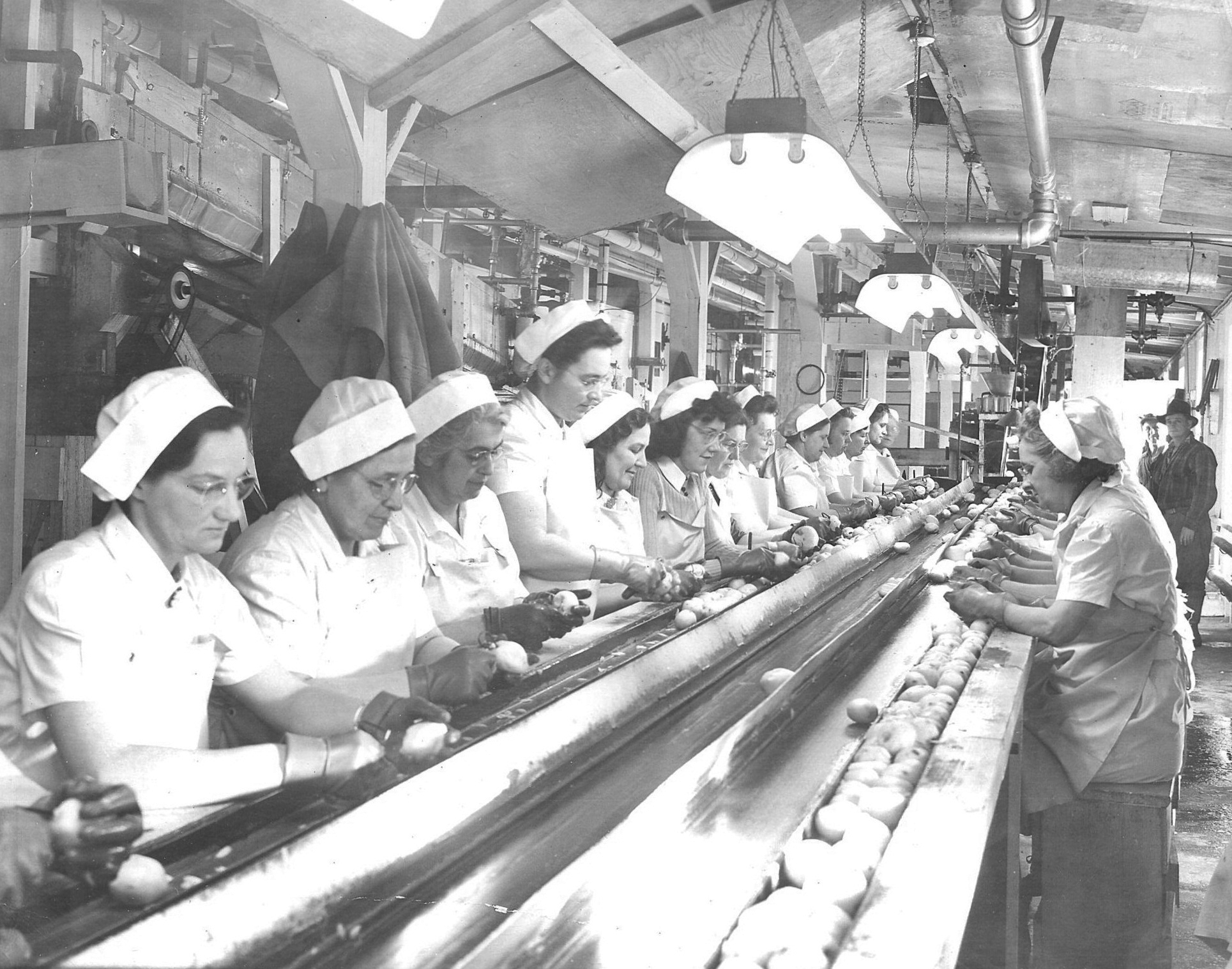
Potato Peeling Line at Baxter’s 1940s. Included in photo are Enzer Lewis, Lillian Towle, Annie Hewes, Vera Furbush & Don Hollister
*
Many locally familiar surnames are seen as property owners on Pleasant Street by 1943.
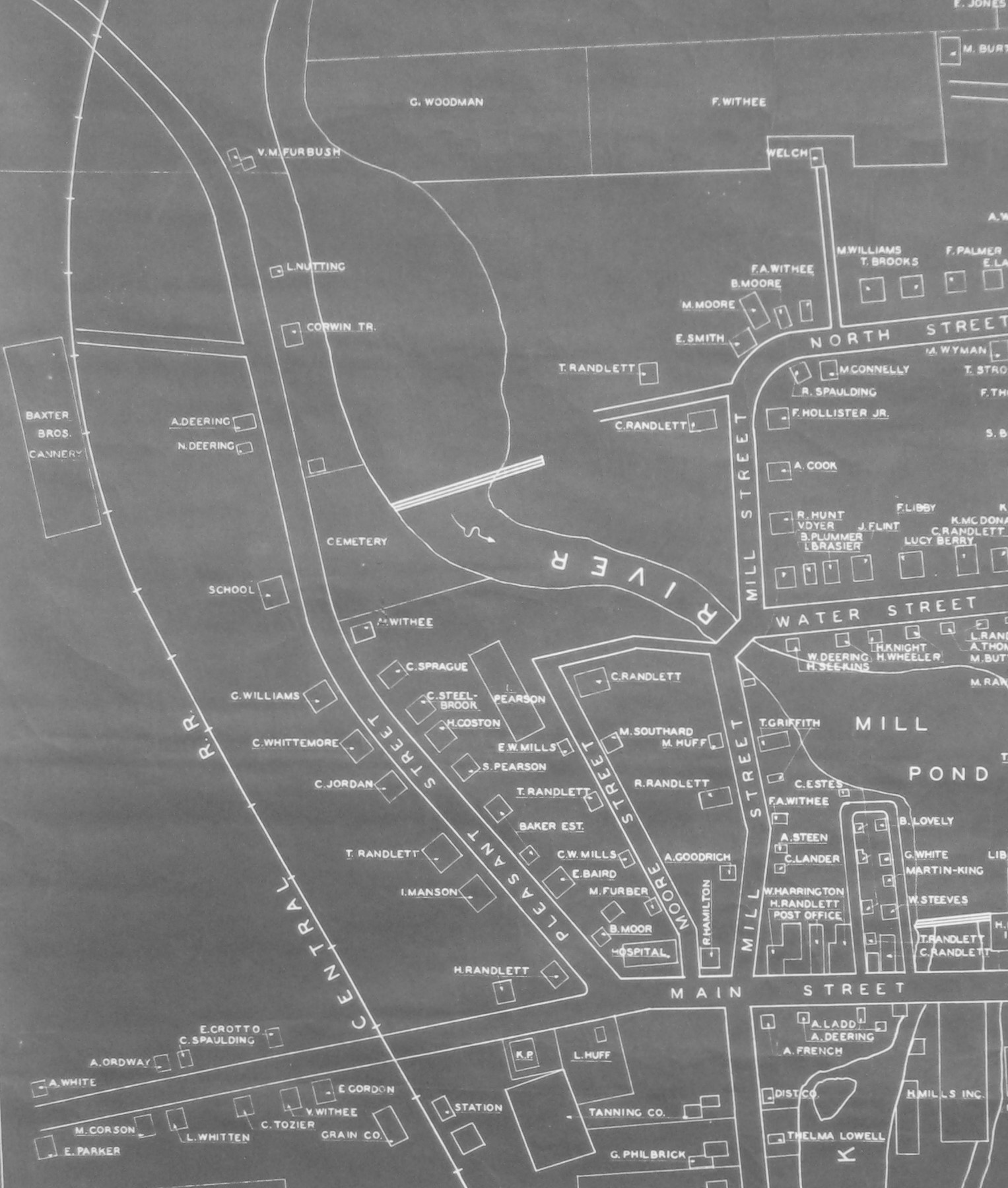
Hartland Village – 1943
*
In the Fall of 1950, the new Hartland Consolidated School was completed on Elm Street and all Hartland Elementary Grade classes were moved to the new school. The Pleasant Street Schoolhouse was purchased later that year from the town by the Hartland American Legion Post #141.
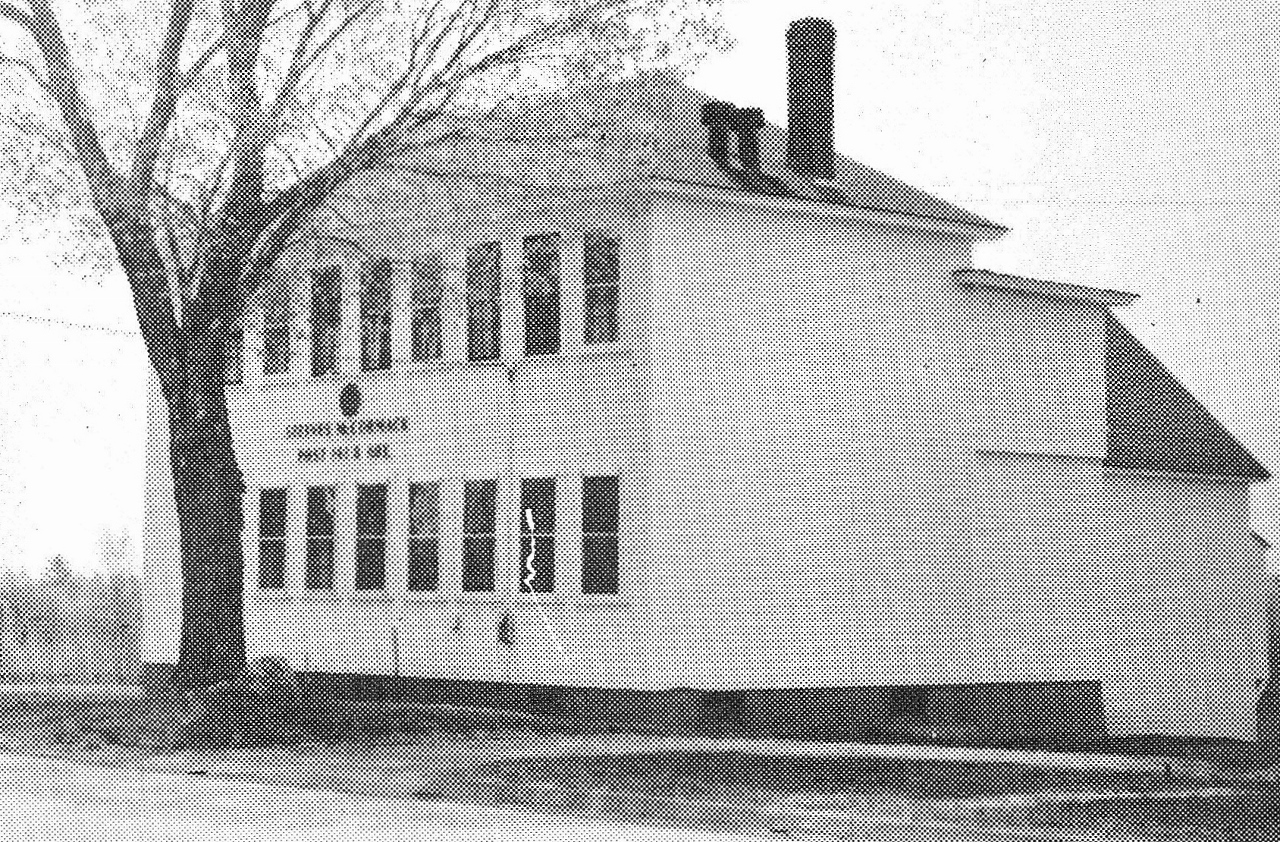
Steeves-McCormack American Legion Post #141 Hall – 1970
*
Public Boat Landings existed on both sides above the Upper Dam for decades, but many residents along the Sebasticook River side of Pleasant Street also maintained private launches with paths leading down to the river from their lots with many still existing today.
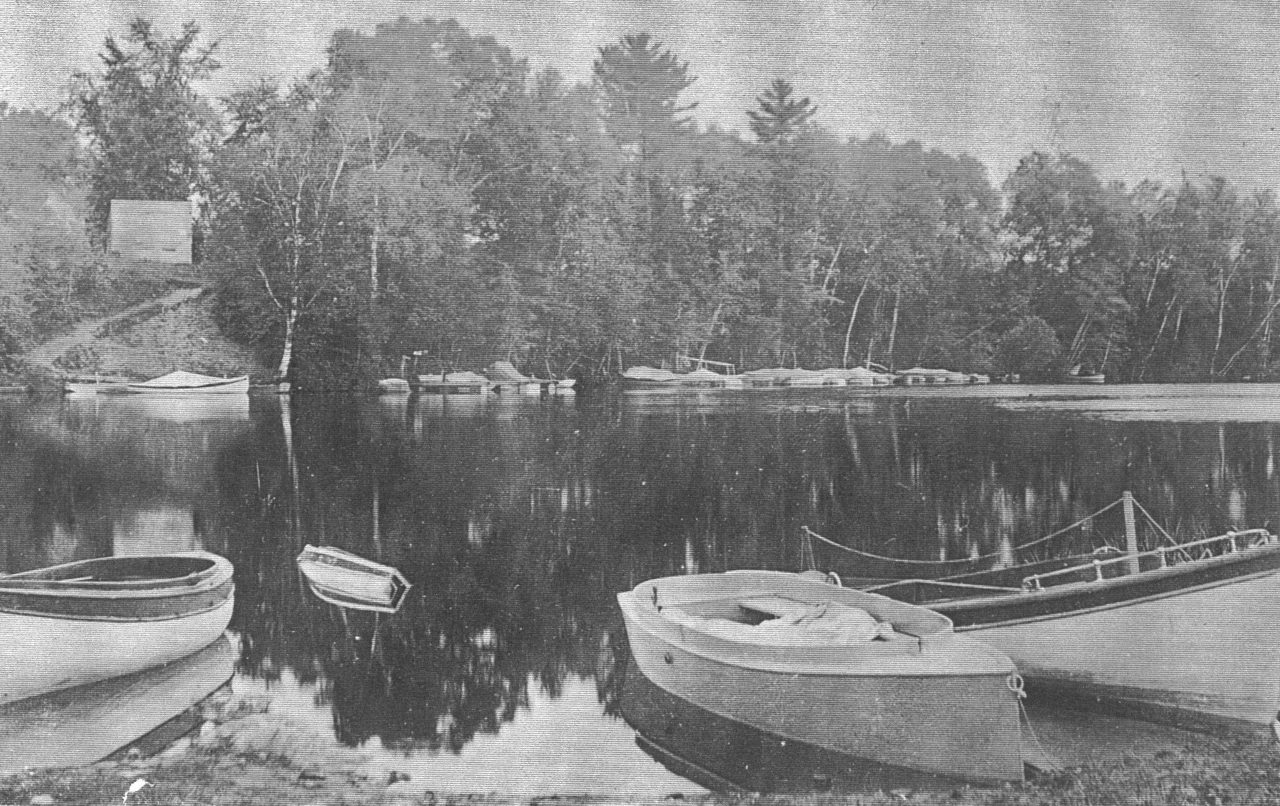
Upper Dam Boat Landings with Pleasant Street in the background
*
Following almost a century of use as a schoolhouse then an American Legion Hall, the building was razed in 2003 and is currently a vacant lot.
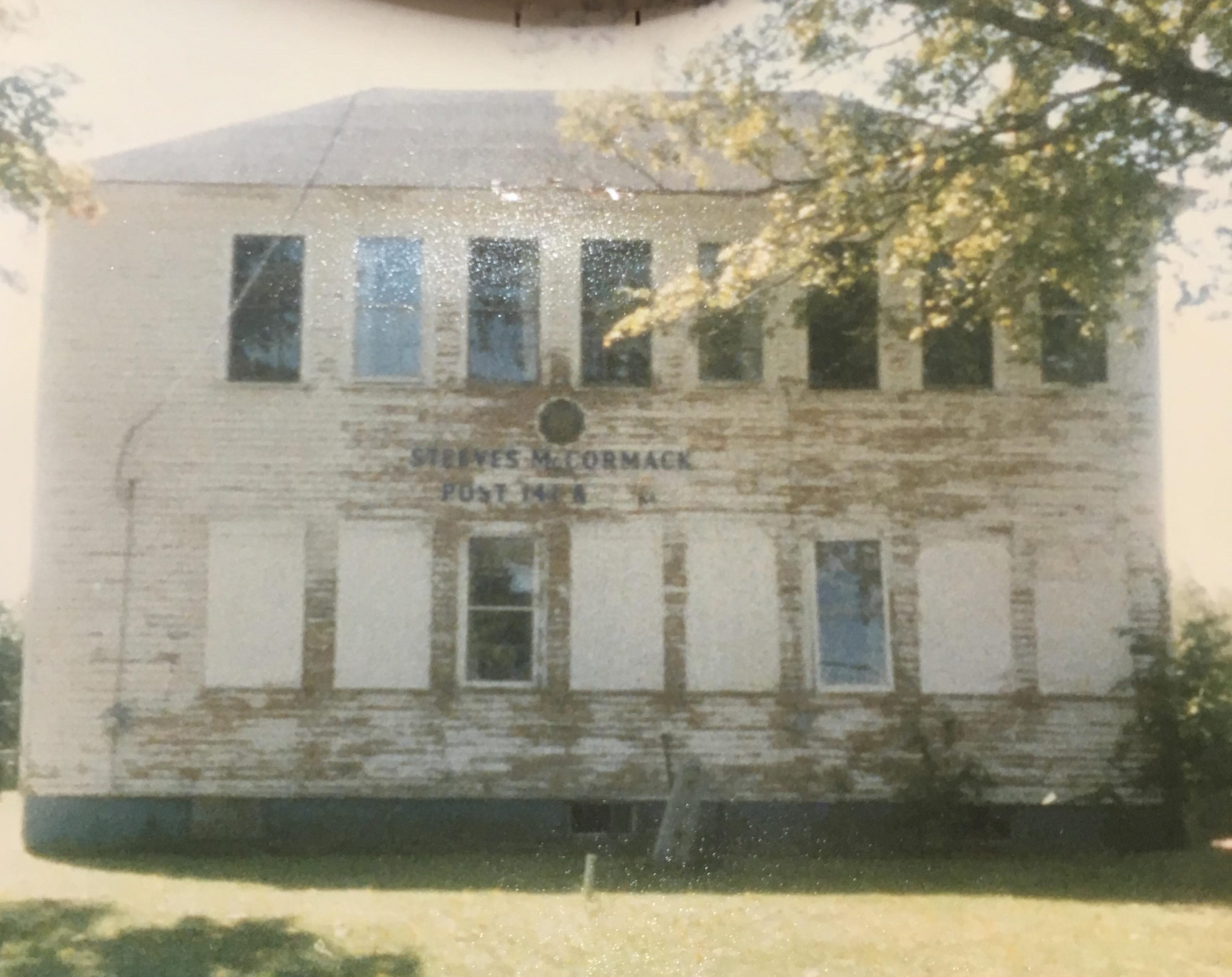
Former Steeves-McCormack American Legion Post #141 Hall – 1984
*
Some of the many “Pleasant Street Kids” gather for a photo on the first day of school in the late 1950s.
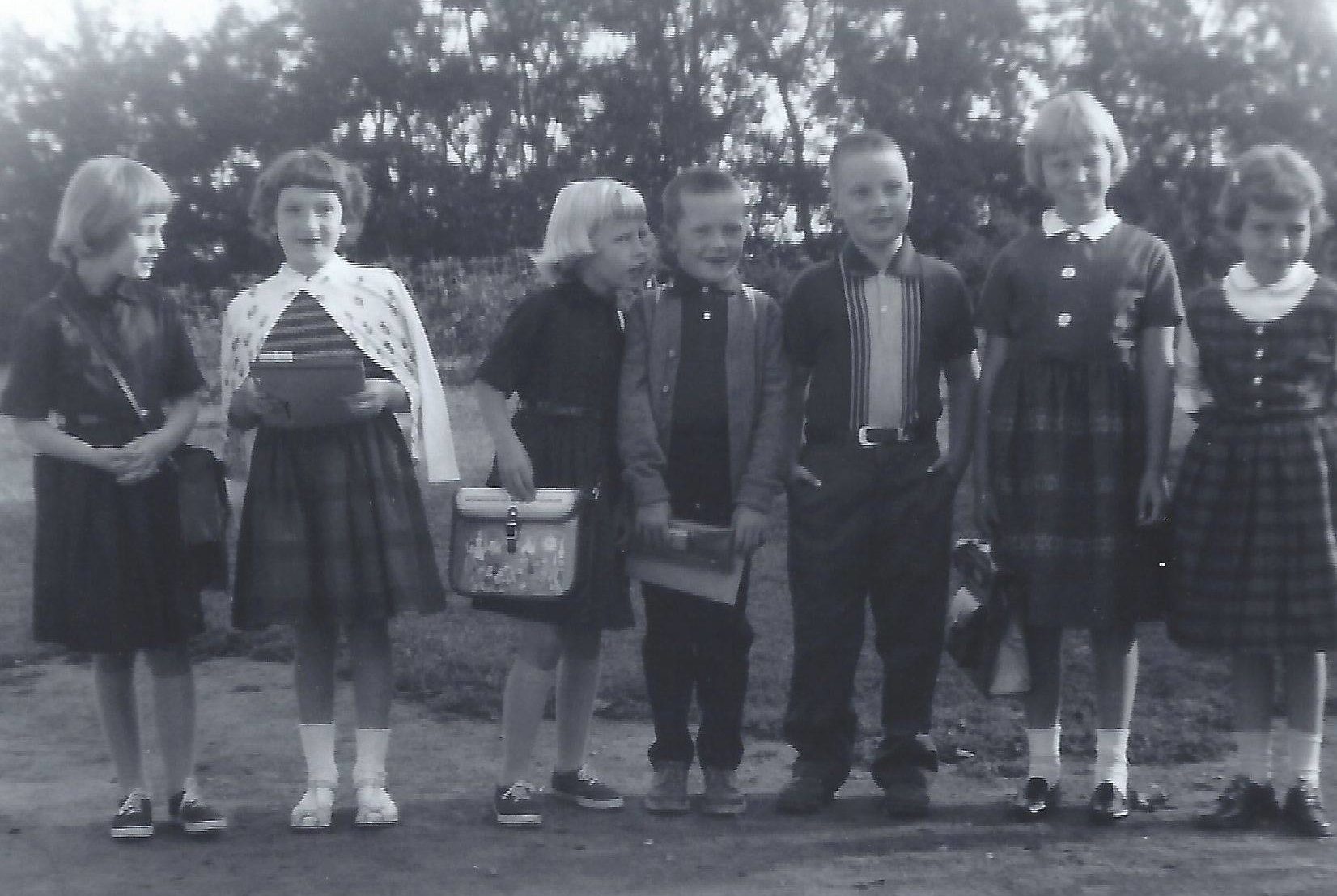
(L-R): Jayne Nutter | Mari-ann Whittemore | Joyce Nutter | Steven Sawyer | Harold Baird | Norma Nutter | Estelle Coston
*
Following the closure of their Hartland H. C. Baxter Canning Plant in the early 1960s, the buildings and property were purchased by the Hartland Tanning Company and used as their Annex for the next several decades including the final trimming and shipping departments.
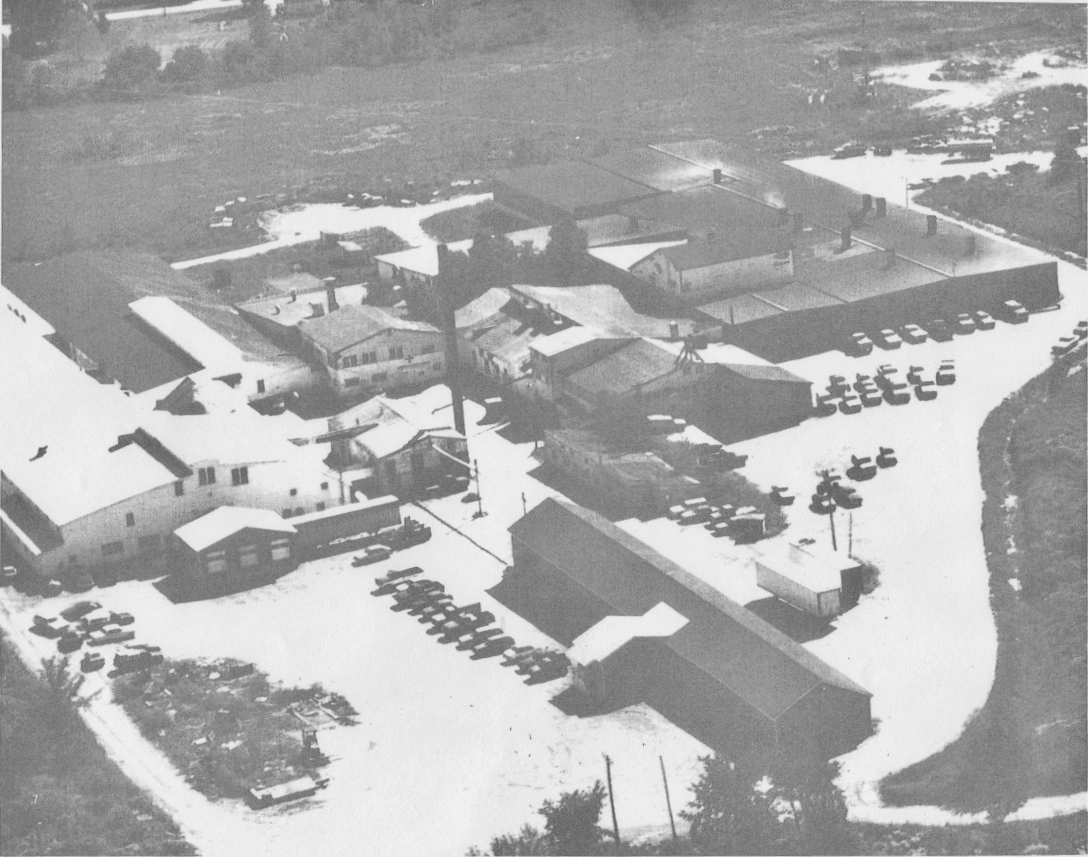
Former H. C. Baxter & Brothers Canning Facility as Irving Tanning Annex – c1962
*
In 1966, the Great Moose Lake & Harmony line extension from Hartland were discontinued with those tracks and the Sebasticook River Trestle removed soon after. Limited freight rail service into Hartland from Pittsfield continued for several more years before it to was finally abandoned in 1983. The tracks were removed and the entire line eventually became part of the trail system for snowmobiles and summer off-road vehicles.
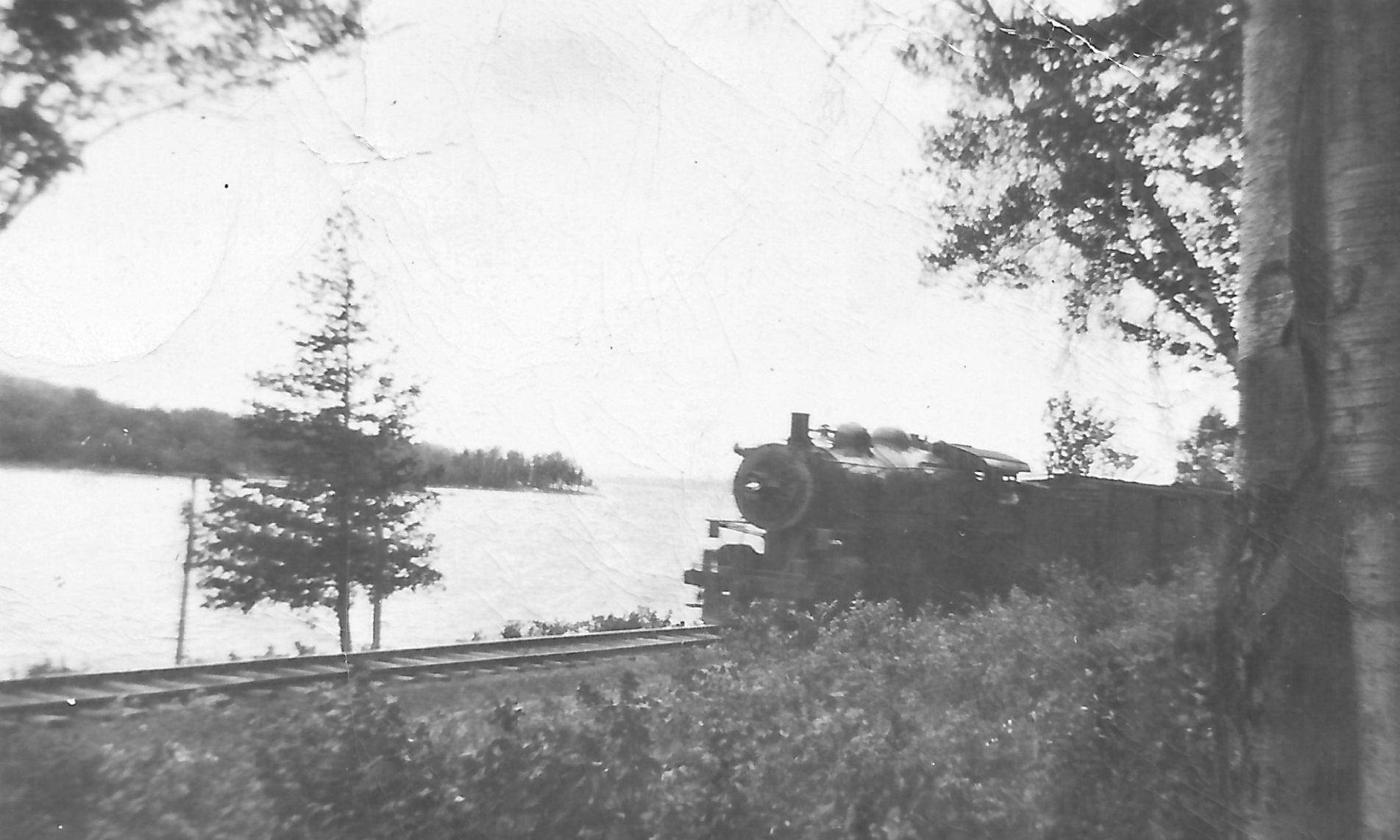
A Maine Central Railroad Locomotive rolls along Great Moose Lake on its way to the Hartland Depot
*
The Hartland Parent-Teachers Citizen Club Swimming Pool Corporation was responsible for building a public swimming pool on Pleasant Street next to the American Legion Hall on the site of the former Ireland Schoolhouse. The pool was built with financial support from the town and matching funds provided by Hartland Tanning Company. The group also administered operations of the pool after it opened.
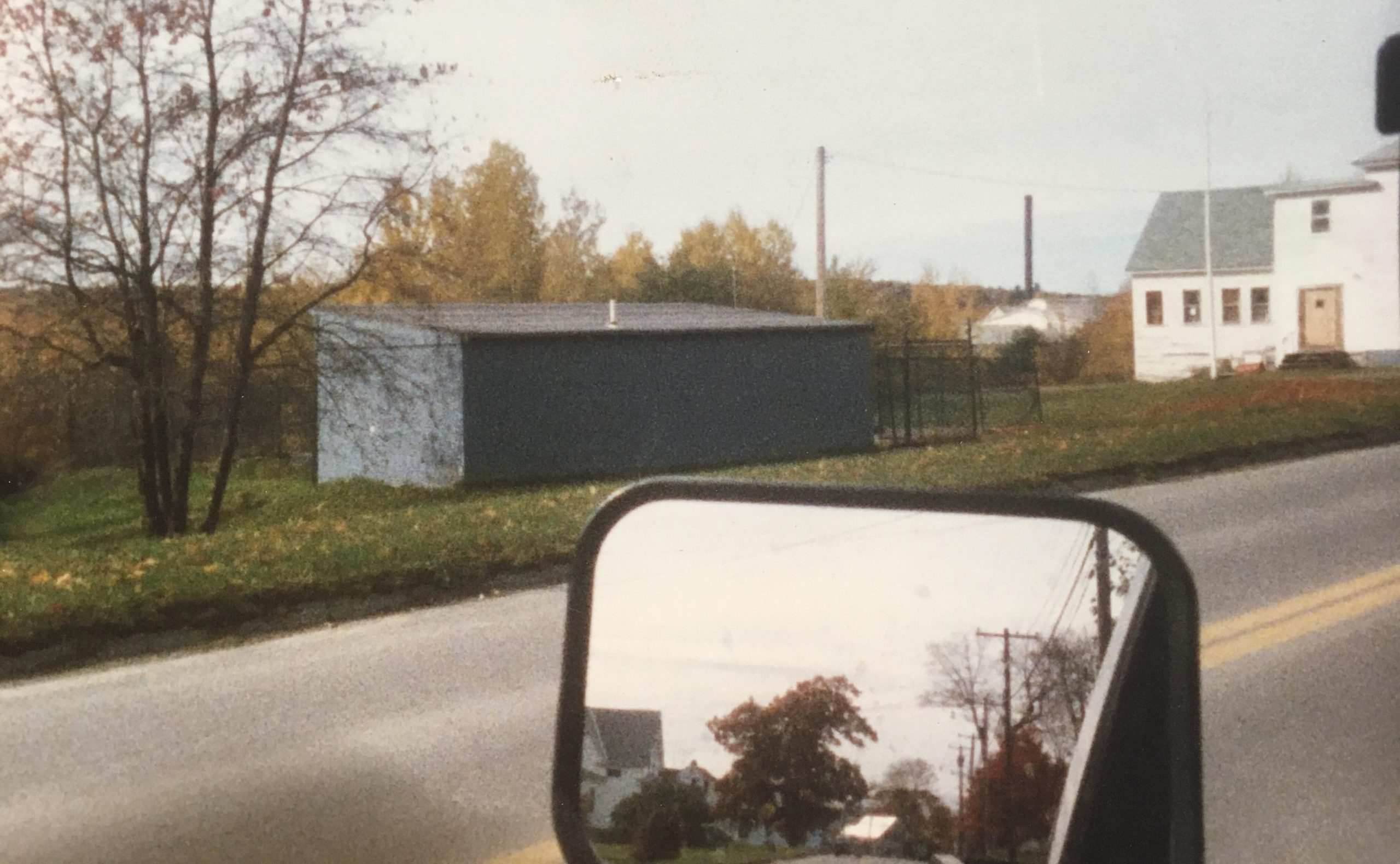
Hartland Town Pool – 1984
*
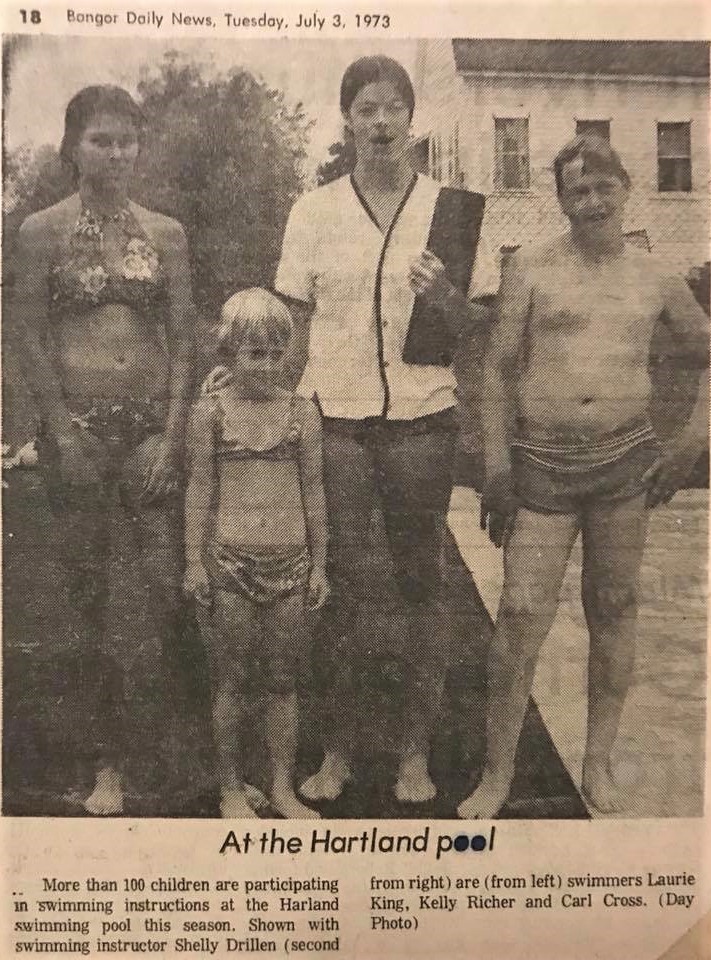
Hartland Swimming Pool – 1973 (Photo courtesy of Laurie King Moore)
On November 22, 2008 the Maine State Museum in Augusta opened their “At Home in Maine” Exhibit. Among the various displays are ‘Birney’s Bedroom’ which includes toys, photos and personal items from the 1950s and 1960s donated by Birney F. Moore and his sister Dixie from their former Pleasant Street home. The bedroom is presented as it would have looked on Birney’s graduation evening from Hartland Academy in 1966 and depicts the theme of growing up and leaving home. Three generations of the Moore family lived in the house from 1923 through 2002.
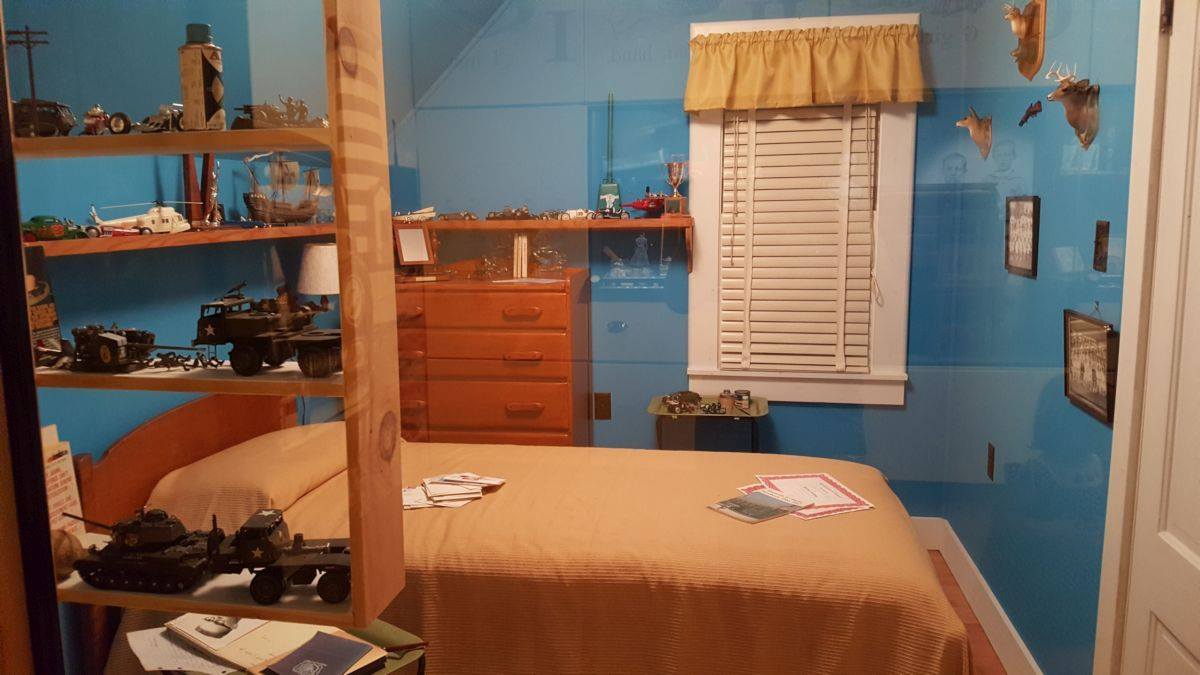
Maine State Museum – Birney F. Moore Bedroom Exhibit
*
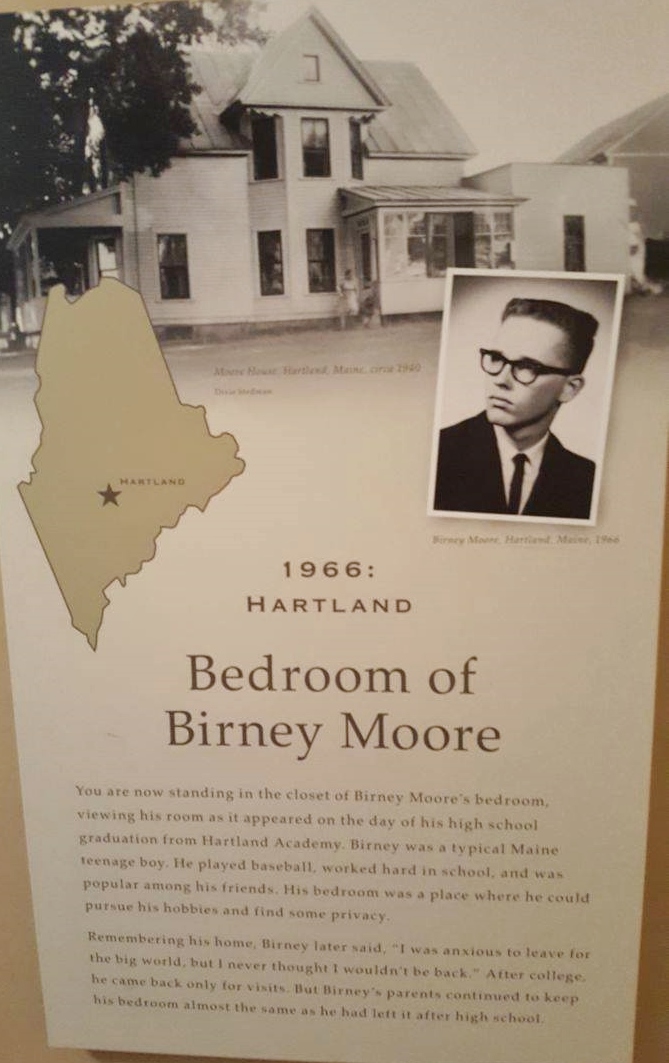
Maine State Museum – Birney F. Moore Bedroom Exhibit Sign
*
Calvin & Lori (Hewins) Warner eventually purchased the former Irving Tanning Company Annex property & buildings with plans to rejuvenate and rename the entire lot as “Calsway” in honor of their deceased son, Calvin Chester Warren. Sadly, Mr. Warner passed away in April of 2020.
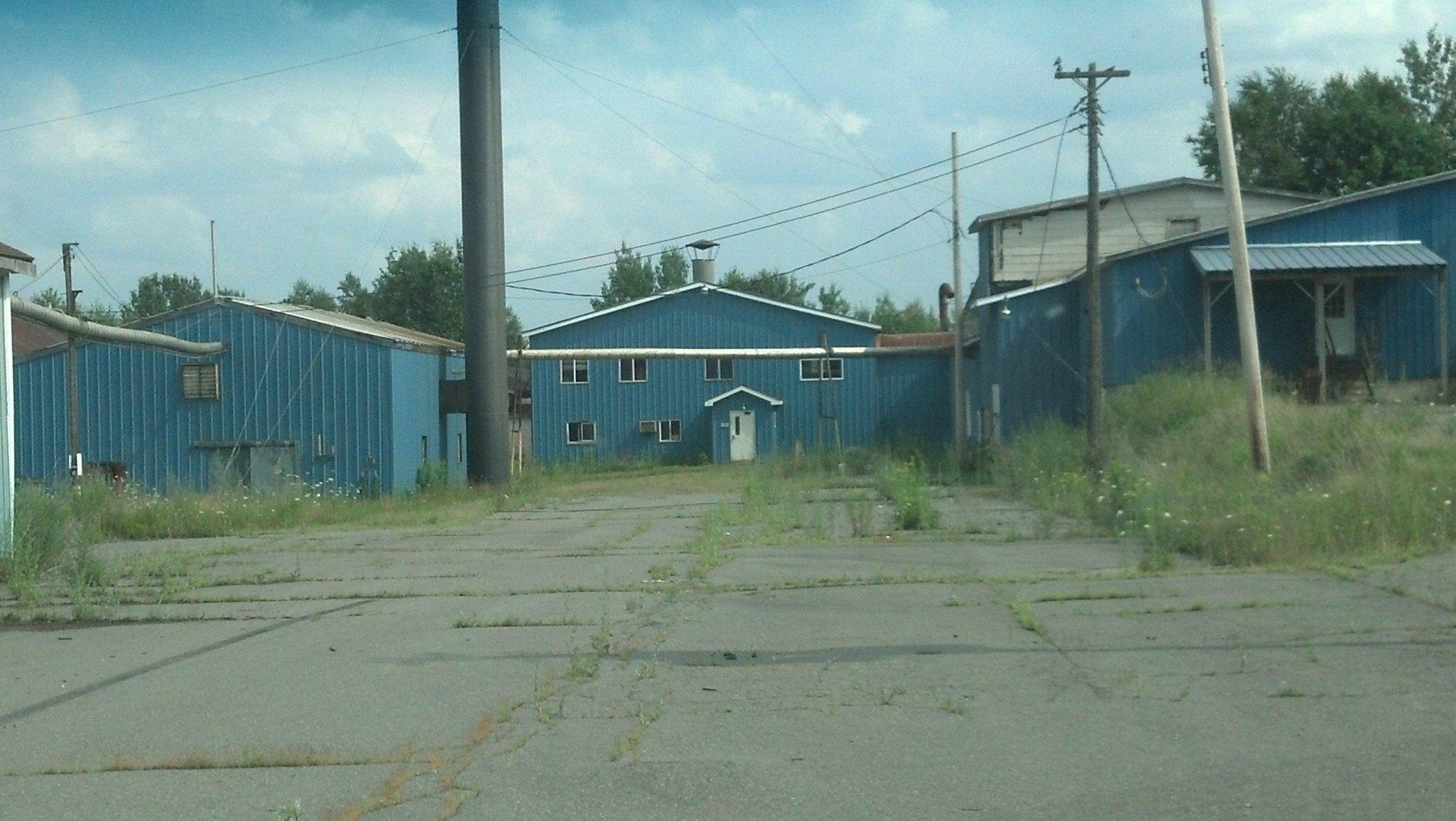
Former Baxter Canning & Irving Tannery Annex
*
Following their purchase, the Warners had the remaining structures of the former Baxter Canning Plant & Tannery Annex taken down in a controlled burn performed by the Hartland Volunteer Fire Department on November 26, 2017.

Controlled Burn of former Baxter Canning Plant & Tannery Annex – 2017 (Photo courtesy of H.V.F.D.)